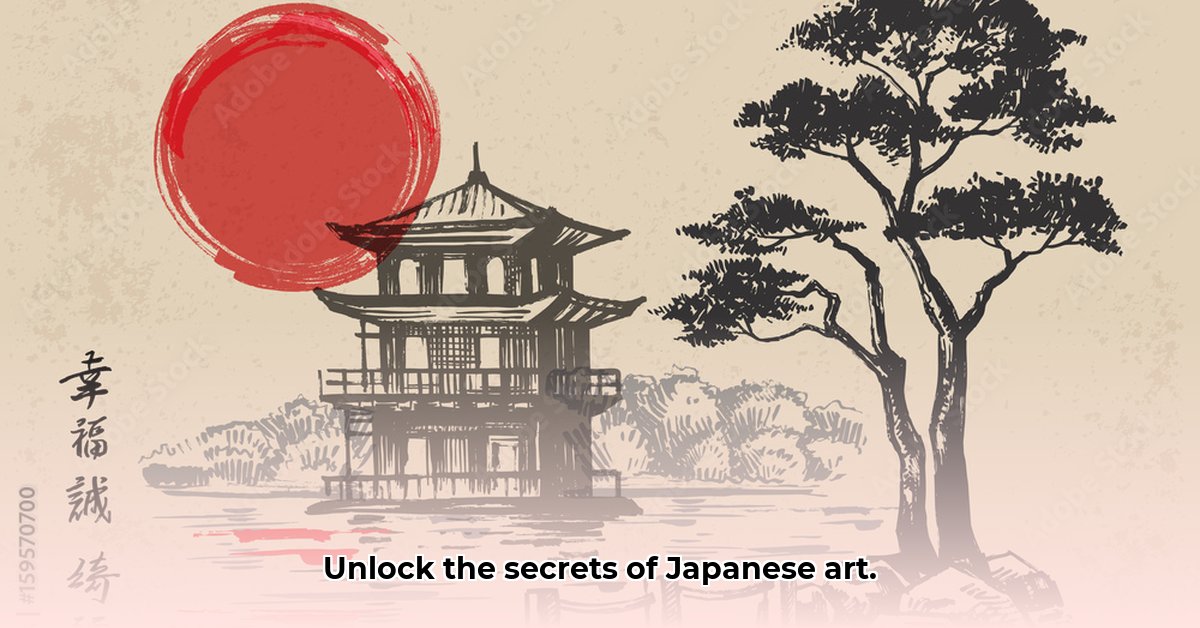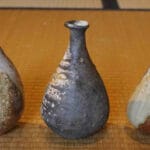From the meditative strokes of sumi-e to the vibrant world of ukiyo-e, Japanese art offers a captivating window into a culture deeply intertwined with nature, spirituality, and an enduring pursuit of aesthetic refinement. This exploration delves into the evolution of Japanese art, tracing its journey through distinct periods and highlighting the cultural forces that shaped its unique character. We’ll uncover the techniques, philosophies, and enduring appeal of some of Japan’s most iconic artistic styles. For more information on specific artists, see this list of famous Japanese artists.
Nature’s Embrace: The Sacred in the Everyday
Nature is not simply a subject in Japanese art; it is a profound source of inspiration, a sacred presence woven into the fabric of everyday life. The delicate blush of cherry blossoms captured in sumi-e‘s fluid ink washes, the towering presence of Mount Fuji immortalized in ukiyo-e woodblock prints—these are not mere depictions but expressions of a deep reverence for the natural world. This connection permeates Japanese art, influencing its aesthetics, themes, and even the very materials employed. We see it in the choice of natural pigments, the incorporation of organic forms, and the emphasis on capturing the ephemeral beauty of the seasons. From the meticulous detail of a single bamboo leaf to the atmospheric haze veiling a distant mountain, Japanese artists have long sought to capture the essence of nature’s fleeting moments, inviting viewers to contemplate the transient beauty of the world around them.
A Tapestry of Styles: Weaving Tradition and Innovation
The story of Japanese art is one of continuous evolution, a vibrant interplay between indigenous aesthetics, philosophical influences, and the embrace of foreign artistic trends. Early yamato-e paintings, with their elegant narratives of court life, reveal the influence of early Chinese art, while the minimalist ink washes and spontaneous brushstrokes of sumi-e reflect the profound impact of Zen Buddhism. The Edo period saw the flourishing of ukiyo-e, with its woodblock prints capturing the vibrant energy of urban life, scenes of kabuki actors, beautiful courtesans, and iconic landscapes. This style, in turn, would significantly influence Western Impressionism, demonstrating the global reach of Japanese artistic innovation. This constant dialogue between tradition and innovation has resulted in a rich tapestry of artistic styles, each with its own distinct character and yet all connected by a shared appreciation for beauty, craftsmanship, and the power of artistic expression. From the bold lines of calligraphy to the intricate details of lacquerware, Japanese art encompasses a diverse range of mediums and techniques, each contributing to the nation’s vibrant artistic heritage.
Mastering the Art: Techniques and Materials
Creating Japanese art requires not only artistic vision but also a deep understanding of traditional techniques and materials. Sumi-e, the art of ink painting, demands precise brush handling and a mastery of ink washes to achieve the desired effects, capturing the essence of a subject with minimal strokes. Ukiyo-e, on the other hand, involves a complex collaborative process between artist, carver, and printer, each contributing their specialized skills to create the final woodblock print. The creation of these intricate prints involved multiple woodblocks, one for each color, meticulously aligned to produce the vivid and detailed images that define the style. This collaborative approach, along with the careful selection of papers and pigments, highlights the importance of craftsmanship in Japanese art, where technical skill and artistic expression are seamlessly intertwined.
The Zen Aesthetic: Simplicity and Spirituality
Zen Buddhism, with its emphasis on meditation, simplicity, and harmony with nature, has profoundly shaped Japanese artistic sensibilities, particularly in the realm of sumi-e. The minimalist aesthetic, often characterized by the evocative use of negative space (ma), invites contemplation and encourages viewers to find meaning in the unspoken. A single brushstroke, carefully placed, can evoke an entire landscape, a testament to the power of suggestion and the beauty of restraint. This emphasis on simplicity is not merely a stylistic choice but a reflection of Zen philosophy, where the absence of clutter allows for greater clarity and a deeper connection to the spiritual realm.
Bridging Past and Present: Contemporary Expressions
Contemporary Japanese artists continue to draw inspiration from their rich heritage while embracing new techniques and mediums. They engage in a vibrant dialogue between past and present, blending traditional aesthetics with modern approaches, exploring themes of identity, globalization, and the ever-evolving relationship between humanity and technology. From the playful pop art of Takashi Murakami to the immersive installations of Chiharu Shiota, contemporary Japanese artists are pushing the boundaries of artistic expression, creating works that resonate with both traditional and modern audiences. The use of digital media, mixed-media techniques, and innovative materials allows for new forms of artistic exploration, ensuring that Japanese art continues to evolve and inspire in the 21st century.
Exploring Key Styles: A Glimpse into Artistic Diversity
| Style | Period | Characteristics | Key Influences |
|---|---|---|---|
| Yamato-e | Nara & Heian | Elegant narrative scenes, often depicting court life and literary themes. | Indigenous Japanese aesthetics, Tang Dynasty art |
| Sumi-e | Kamakura onward | Minimalist ink paintings, emphasizing spontaneity, flow, and the evocative power of negative space. | Zen Buddhism, Chinese ink painting traditions |
| Ukiyo-e | Edo Period | Vibrant woodblock prints showcasing everyday life, entertainment, landscapes, and beautiful women. | Popular culture, kabuki theater, urban landscapes |
| Contemporary | Present Day | Diverse styles blending traditional and modern techniques, exploring a wide range of themes and mediums. | Global art movements, technology, popular culture |
Japanese art invites us to embark on a journey of discovery, to explore a world where nature is revered, spirituality is embraced, and artistic mastery is pursued with unwavering dedication. Its enduring power lies in its ability to bridge tradition and innovation, creating a vibrant and dynamic artistic landscape that continues to captivate and inspire.
- Red Cloud, NE: Discover Willa Cather’s Legacy - April 11, 2025
- Remember Old Social Media Sites? Their Rise and Fall - April 11, 2025
- How many days till Feb 3?Accurate Countdowns & Tools - April 11, 2025
















